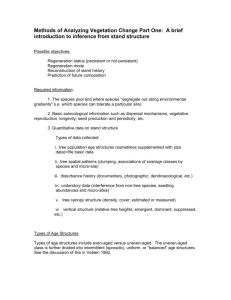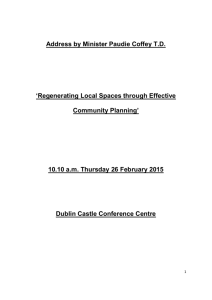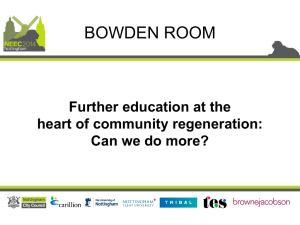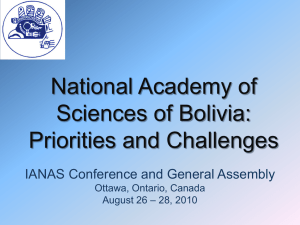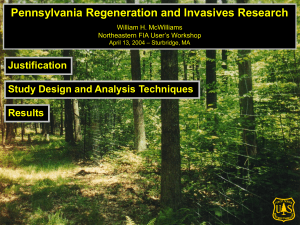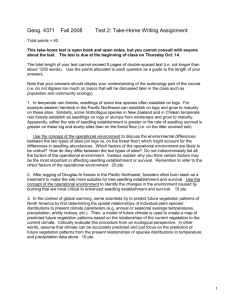Hier titel invoegen
advertisement
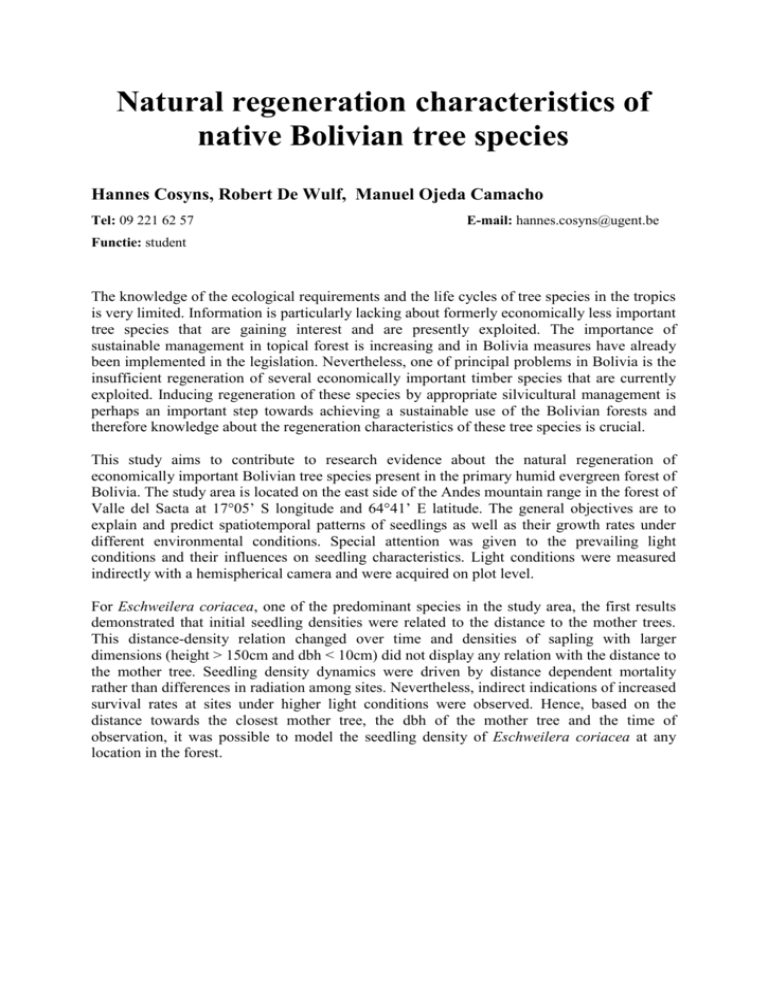
Natural regeneration characteristics of native Bolivian tree species Hannes Cosyns, Robert De Wulf, Manuel Ojeda Camacho Tel: 09 221 62 57 E-mail: hannes.cosyns@ugent.be Functie: student The knowledge of the ecological requirements and the life cycles of tree species in the tropics is very limited. Information is particularly lacking about formerly economically less important tree species that are gaining interest and are presently exploited. The importance of sustainable management in topical forest is increasing and in Bolivia measures have already been implemented in the legislation. Nevertheless, one of principal problems in Bolivia is the insufficient regeneration of several economically important timber species that are currently exploited. Inducing regeneration of these species by appropriate silvicultural management is perhaps an important step towards achieving a sustainable use of the Bolivian forests and therefore knowledge about the regeneration characteristics of these tree species is crucial. This study aims to contribute to research evidence about the natural regeneration of economically important Bolivian tree species present in the primary humid evergreen forest of Bolivia. The study area is located on the east side of the Andes mountain range in the forest of Valle del Sacta at 17°05’ S longitude and 64°41’ E latitude. The general objectives are to explain and predict spatiotemporal patterns of seedlings as well as their growth rates under different environmental conditions. Special attention was given to the prevailing light conditions and their influences on seedling characteristics. Light conditions were measured indirectly with a hemispherical camera and were acquired on plot level. For Eschweilera coriacea, one of the predominant species in the study area, the first results demonstrated that initial seedling densities were related to the distance to the mother trees. This distance-density relation changed over time and densities of sapling with larger dimensions (height > 150cm and dbh < 10cm) did not display any relation with the distance to the mother tree. Seedling density dynamics were driven by distance dependent mortality rather than differences in radiation among sites. Nevertheless, indirect indications of increased survival rates at sites under higher light conditions were observed. Hence, based on the distance towards the closest mother tree, the dbh of the mother tree and the time of observation, it was possible to model the seedling density of Eschweilera coriacea at any location in the forest.



